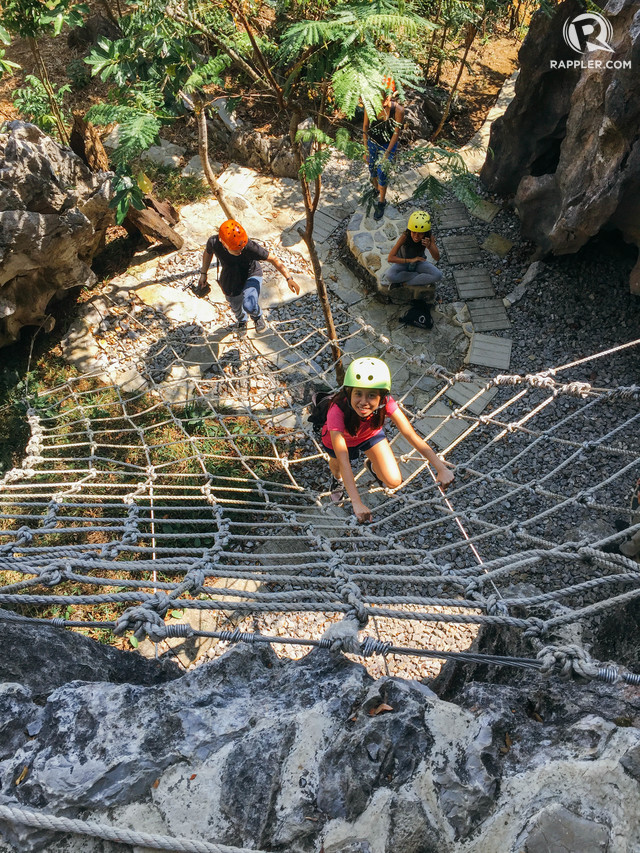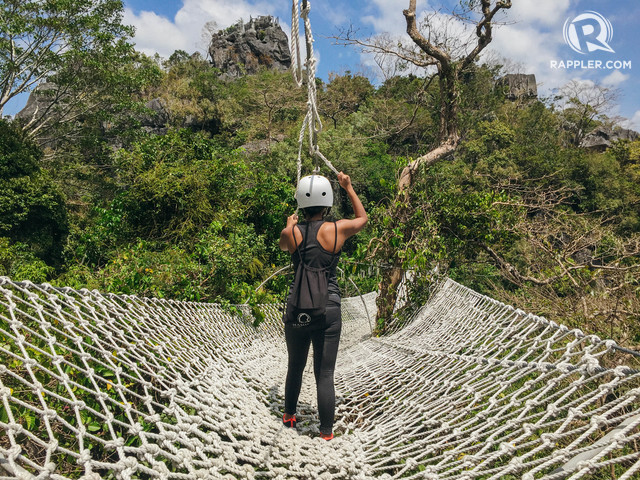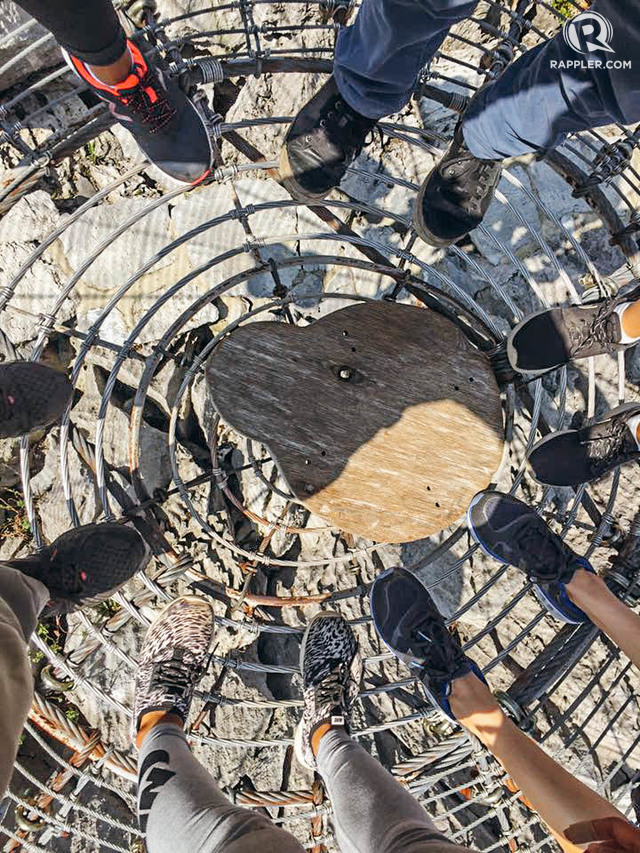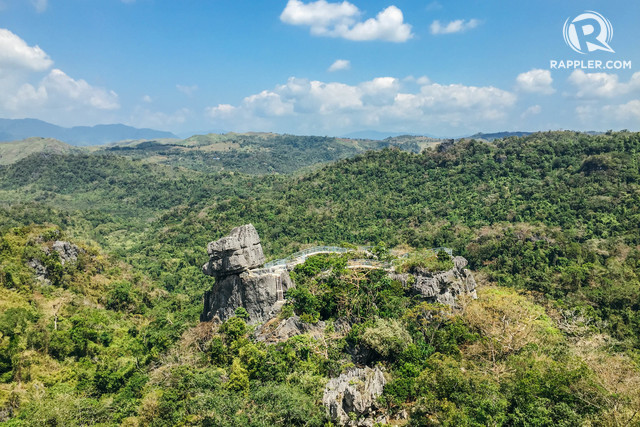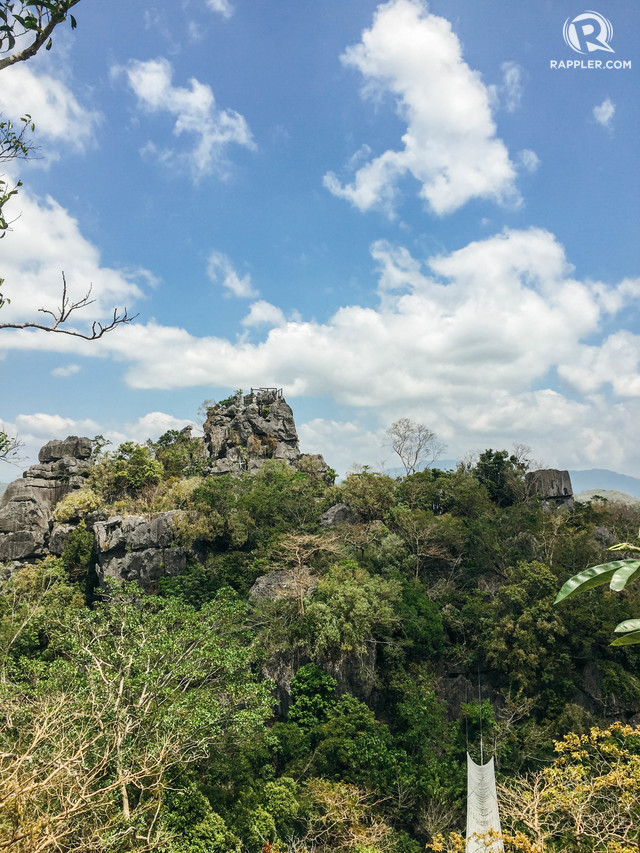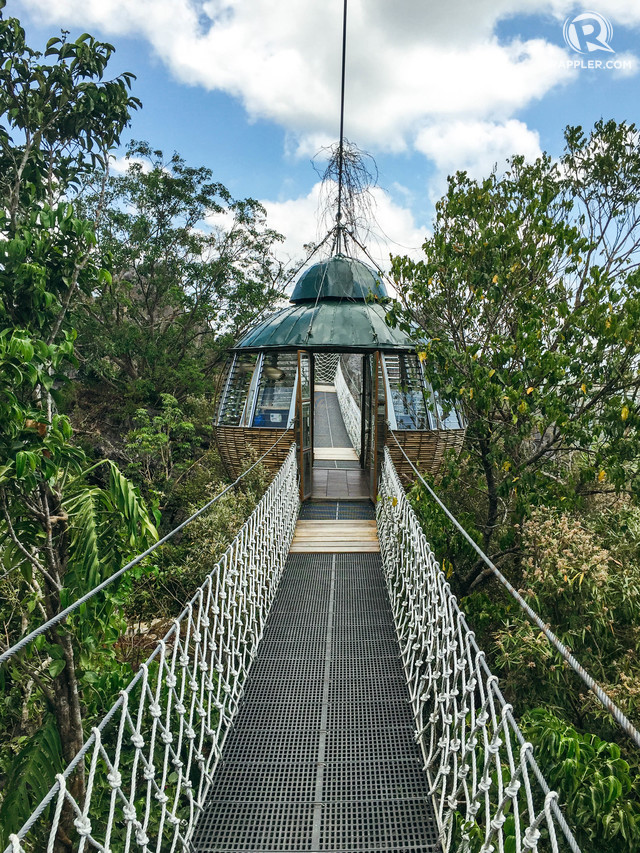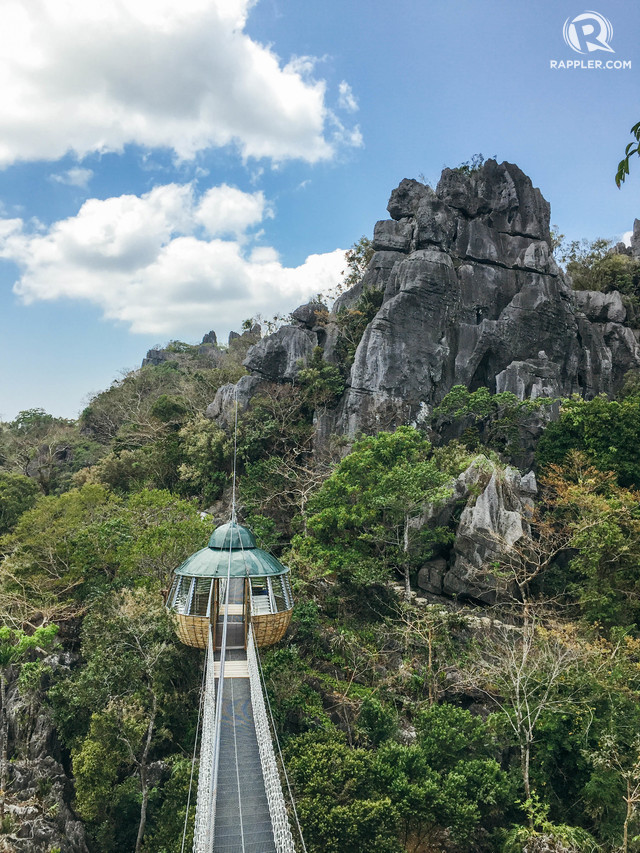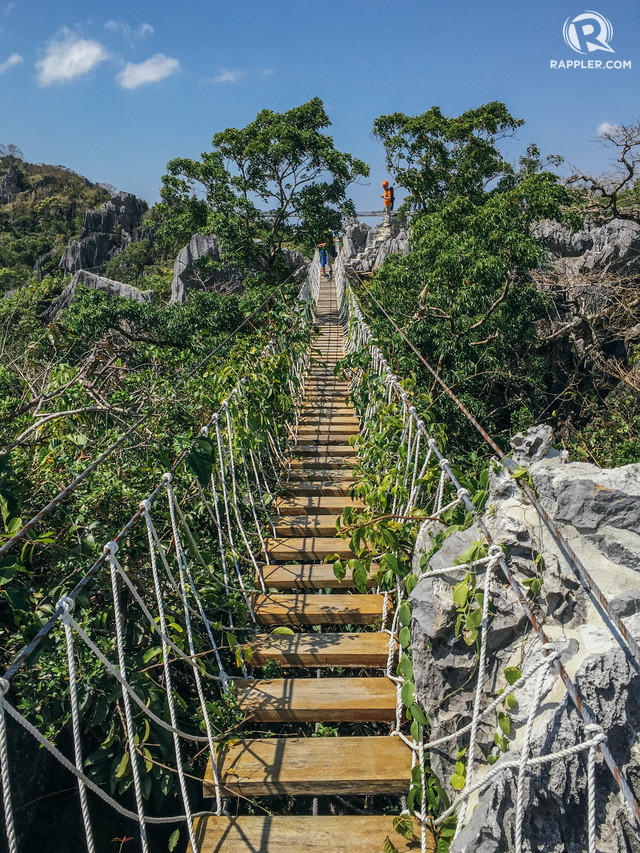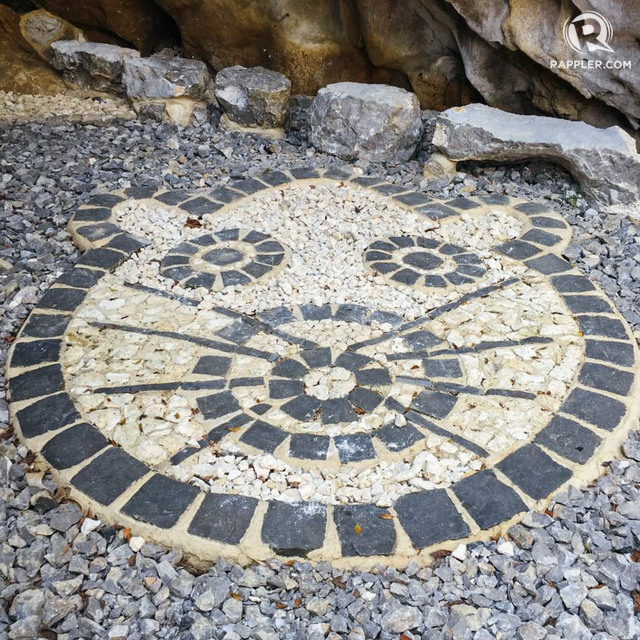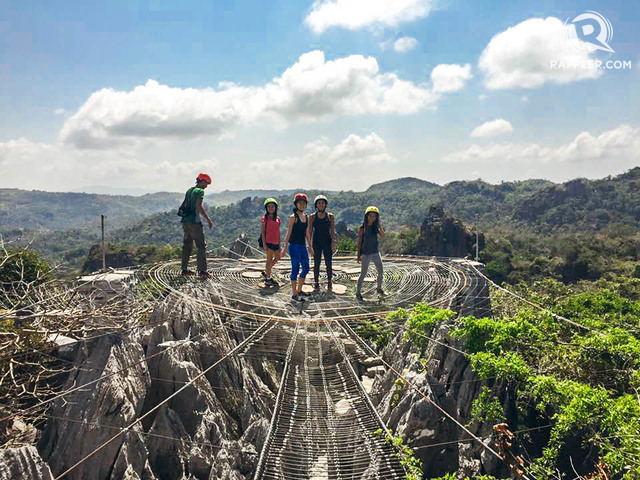A First-Timer’s guide to Masungi Georeserve, where adventure awaits – You may have been seeing breathtaking photos of this geopark (plus the spectacular views) on social media. Here’s a guide to help you plan a visit to this exciting destination that isn’t too far from Manila.
Photos of smiling barkadas lying on a giant hammock or standing on a metal spider web have been populating Facebook and Instagram feeds lately, and you’re probably wondering, what is this place, and how can I get there?
A geopark in the Philippines, Masungi Georeserve is a conservation area in Rizal that aims to sustainably protect the rocks, flora, and fauna within it. A trail, including rope courses, allows visitors to go through the highlights of the georeserve, showcasing the formidable rock formations and lush forestry in this sprawling area.
Masungi’s name originates from masungki, referring to the jagged rocks gracing its landscape. Within its property, species of flora and fauna endemic to the Philippines are being protected. The Luzon cloud rat and the guyabero are nocturnal and are rarely seen by visitors, but plants such as the jade vine and the wisteria can be enjoyed by those who go through the trail.
If you’ve never been to this destination in Rizal, here’s what to expect in Masungi Georeserve.
1. An easy drive, but challenge making reservations
If you’re coming from Manila, driving to Masungi on a weekend morning will be incredibly convenient. The area is easily accessible via Marcos Highway, and with no traffic, will take around an hour to an hour and a half.
Reservations must be made in advance – in some cases, months, due to Masungi’s growing popularity. The site is limited to 4 groups per day, in order to preserve the area and to better control foot traffic.
OUR TIP: Bring your own car as parking is easy, and plan your group’s date and time of visit ahead so you can reserve in advance.
2. A lot of cardio
For more experienced hikers or mountaineers, going through the Masungi trail will be a leisurely walk. For those with relatively sedentary lifestyles, the trail walk could be a healthy challenge and will help work up a good sweat and bring the heart rate up for a change.
The trail walk will take around 3 to 4 hours (according to the guides, it only extends to 4 if the group takes particularly longer to take photos), and most of the trail is lined with cement steps, making it easy for individuals to go through it quite easily. However, it also calls for a lot of uphill climbing, and the rope courses require a bit of physical acuity to get through.
After a generous amount of climbing up steps, the first rope course that visitors will be faced with is Lambat, a rope net that allows groups to get up a rock wall and onto the rest of the conservation.
LAMBAT. The first rope course that visiting groups will encounter in Masungi is a rope net that allows them to climb a rock wall and onto the rest of the conservation. Photo by Nicole Reyes/Rappler
Duyan, a giant rope hammock, is one of Masungi’s most popular and most photographed courses. Spanning a few hundred feet, this photogenic rope course can be a slight challenge for the less physically active.
DUYAN. A giant rope hammock, Duyan is one of Masungiâs most photographed rope courses. Photo by Nicole Reyes/Rappler
Photo by Nicole Reyes/Rappler
OUR TIP: It’s important for visitors to wear light, comfortable clothing and closed shoes. Water is provided at the visitor sheds at the briefing.
3. Incredible heights
For those with a fear of heights, a trip to Masungi is one to take if you want to face this fear head on. Most of the rope courses are quite a ways above the ground, and viewing this from a hanging bridge or a metal
Sapot, another of Masungi’s most photographed attractions, is a metallic platform with wooden steps, formed to mimic a spider web that hangs above one of its rock formations. It offers scenic views of both the Sierra Madre mountains, the country’s longest mountain range, and Laguna de Bay, the country’s largest lake.
SAPOT. Formed in the shape of a spider web, Sapot is a viewing deck high above the peaks of Masungi. Photo by Nicole Reyes/Rappler
Photo by Zak Yuson/Rappler
Tatay and Nanay are the two tallest peaks in the georeserve, offering vast views of the conservation area.
NANAY. One of the two tallest peaks in Masungi, Nanay is a natural limestone formation connected by bridges. Photo by Nicole Reyes/Rappler
TATAY. Tatay is the highest peak in Masungi Georeserve. Photo by Nicole Reyes/Rappler
In lieu of a treehouse and in order to be less intrusive to the natural formations and greenery in the georeserve, Patak hangs over the treetops in Masungi. Reminiscent of a cable car, this charming wooden structure also offers a spot for visitors to take a breather and experience the fresh air and wind.
PATAK. Reminiscent of a cable car, this structure offers a scenic breather in the midst of the trail. Photo by Nicole Reyes/Rappler
Photo by Nicole Reyes/Rappler
Several hanging bridges also connect sections of the georeserve to each other.
Photo by Nicole Reyes/Rappler
Photo by Nicole Reyes/Rappler
Those who want to see the georeserve but aren’t ready to face their fear of heights yet don’t need to worry – most rope courses have alternate, though longer routes around.
OUR TIP: Hang on tightly to your phones and gadgets when going through the course, as there’s no guarantee that these can be retrieved if they fall.
4. Friendly and knowledgeable staff
In order to help its immediate community, Masungi employs mostly locals from surrounding areas in Rizal as tour guides and staff.
Yungib ni Ruben, one of the attractions that can be seen by those who go through the trail, was discovered by its namesake, one of Masungi’s more creative staffers. If you’re lucky, you can also chance on Kuya Ruben making a compost pile, shaping it into an interesting pattern that caught his attention that day, like that of a snail’s shell.
YUNGIB NI RUBEN. Photo by Nicole Reyes/Rappler
Photo by Zak Yuson/Rappler
OUR TIP: Talk to the guides and make conversation. You’ll be with them for the 3 or 4 hours of the trail, and you’ll get to hear their interesting stories.
5. Disconnection from the outside world
Like with most breathtaking destinations, you’ll have a difficult time finding signal once you get to the gates of Masungi. The guides have radios in case of emergencies, but you really won’t need to contact anyone from up there anyway.
OUR TIP: Needless to say, there will be countless photogenic Instagrammable moments, but take lots of pictures and save the uploading attempts for when you get back.
Photo by Zak Yuson/Rappler
As of the time of writing, Masungi Georeserve continues to face challenges with illegal loggers and reports of land-grabbing in the area. It’s safe for visits, but it might be difficult to make bookings for weekends of the summer season.
Masungi accepts groups of 7-10 persons at a rate of P1,400 per person in April 2016 onwards. Visits are by reservation only and walk-ins are not allowed. Reservations are made through their website.
Masungi Georeserve is located in Garden Cottages, Kilometer 45 Marcos Highway, Rizal, Philippines | Email Address: [email protected] | Website: masungigeoreserve.com
Source: rappler.com





